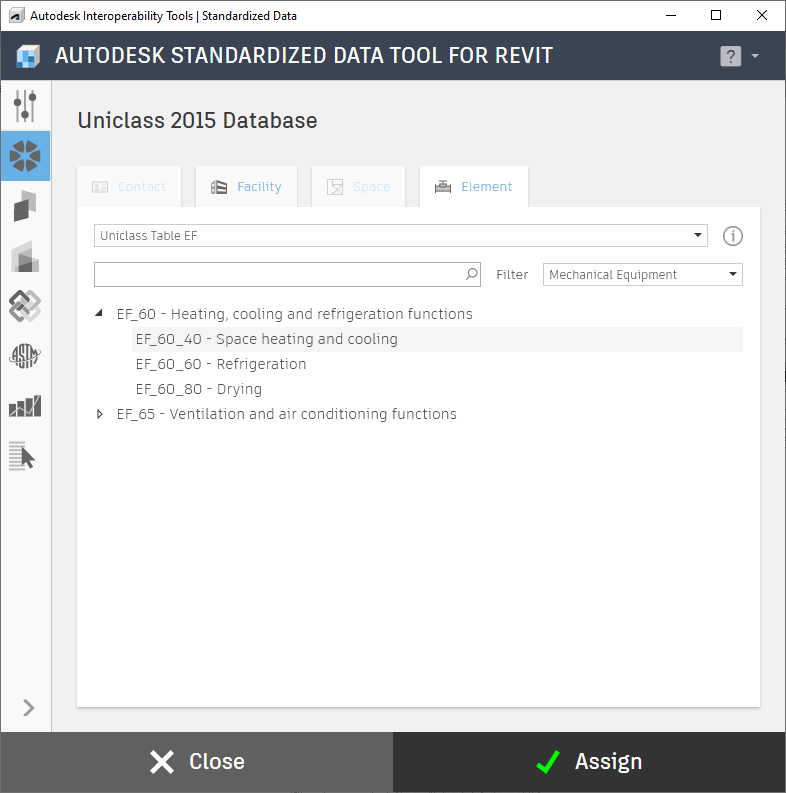Assign Classification

Once you have finished selecting the database, you can assign classifications. For elements in the Revit model, select the elements, and then left-click the "Assign Classification" icon. Depending on what type of element you selected, the appropriate tab and filter will be applied to your list of classifications to use. If you have no element selected, you will be given the option to assign Facility classifications, which get assigned to the Project Information. The Contact tab is used as integration with the Autodesk COBie Extension for Revit.
The topmost tab in the Assign dialog box is the Options, which apply to any of the classifications you may assign.

"Set COBie Parameters" will assign the classification to the appropriate default parameter used by the Autodesk COBie Extension for Revit, if those parameters exist in the model.
The "Blanks Only" checkbox is a failsafe that can keep you from overwriting any existing data already in the parameters used by the Standardized Data Tool.
You can select which classification systems to display on the left panel by clicking on the appropriate checkbox.
Picklist provides the means for a user to define their own classification system utilizing the default Excel spreadsheet provided in the installation folder or another spreadsheet of your choosing.

To assign a classification, simply navigate through the tree, select the classification tab and then the classification you want to assign, and click the Assign button. You can easily toggle between classification systems in the tabs at the top, if your database supports multiple systems.
For more information, sample files, and downloads, visit the Standardized Data Tool page on the Autodesk Interoperability Tools website.
